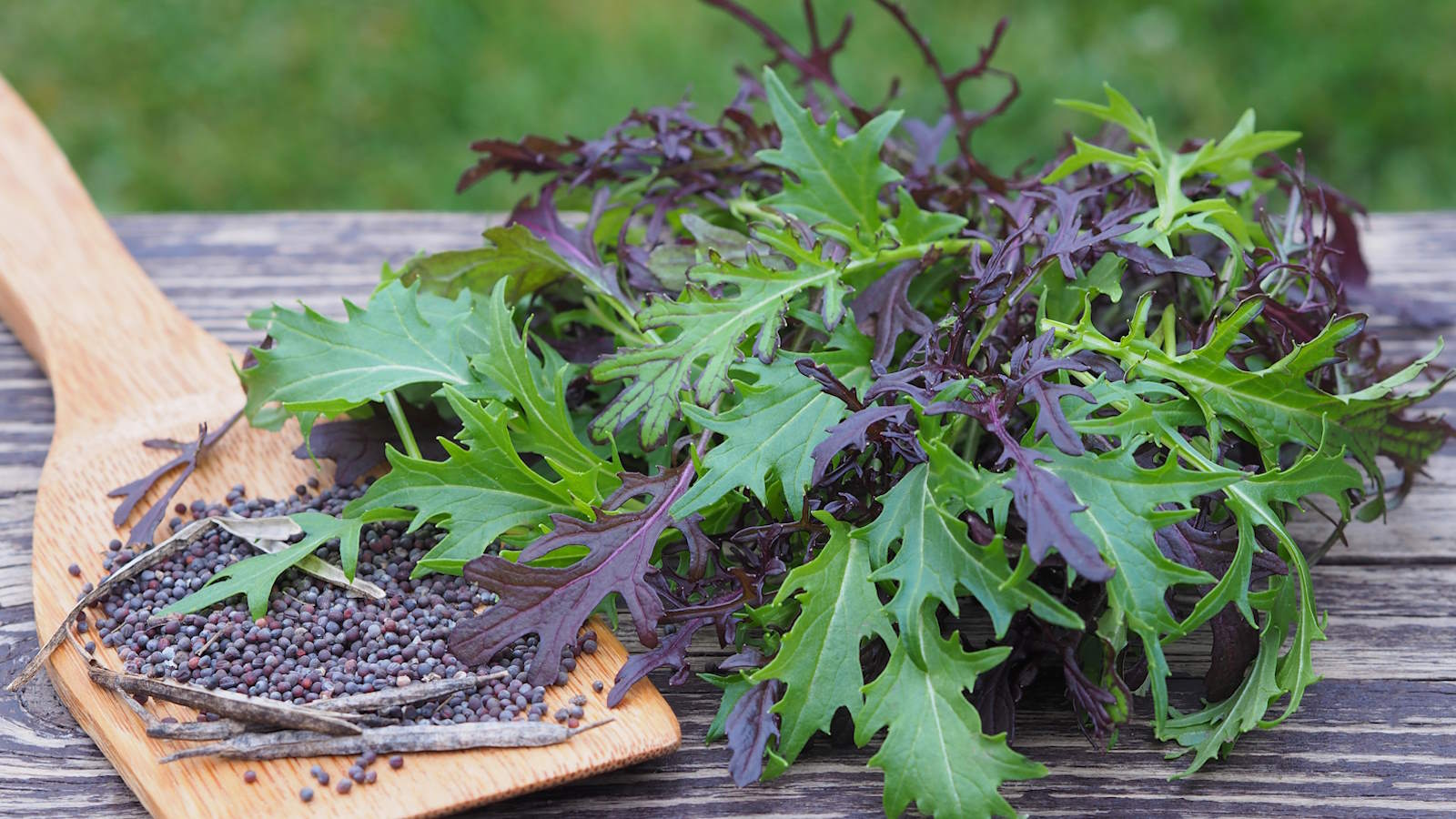
Mizuna is a fantastic Japanese crop that is really simple to grow and can provide lots of delicious leaves through the cooler months of the year. With a bit of planning, you can actually even enjoy fantastic harvests of mizuna for much of the year.
The plant produces glossy and serrated leaves that can be eaten raw or cooked. Their rosettes of leaves come in both green and red-leaf varieties and look highly-attractive, as well as being tasty.
I have grown mizuna in several vegetable gardens, both at work in kitchen gardens I looked after and on my home plots, and found it one of the easiest vegetables to grow.
So, if you are looking for a new flavorful green to grow, we take a closer look at how to sow, grow, and harvest this under-rated Japanese vegetable.
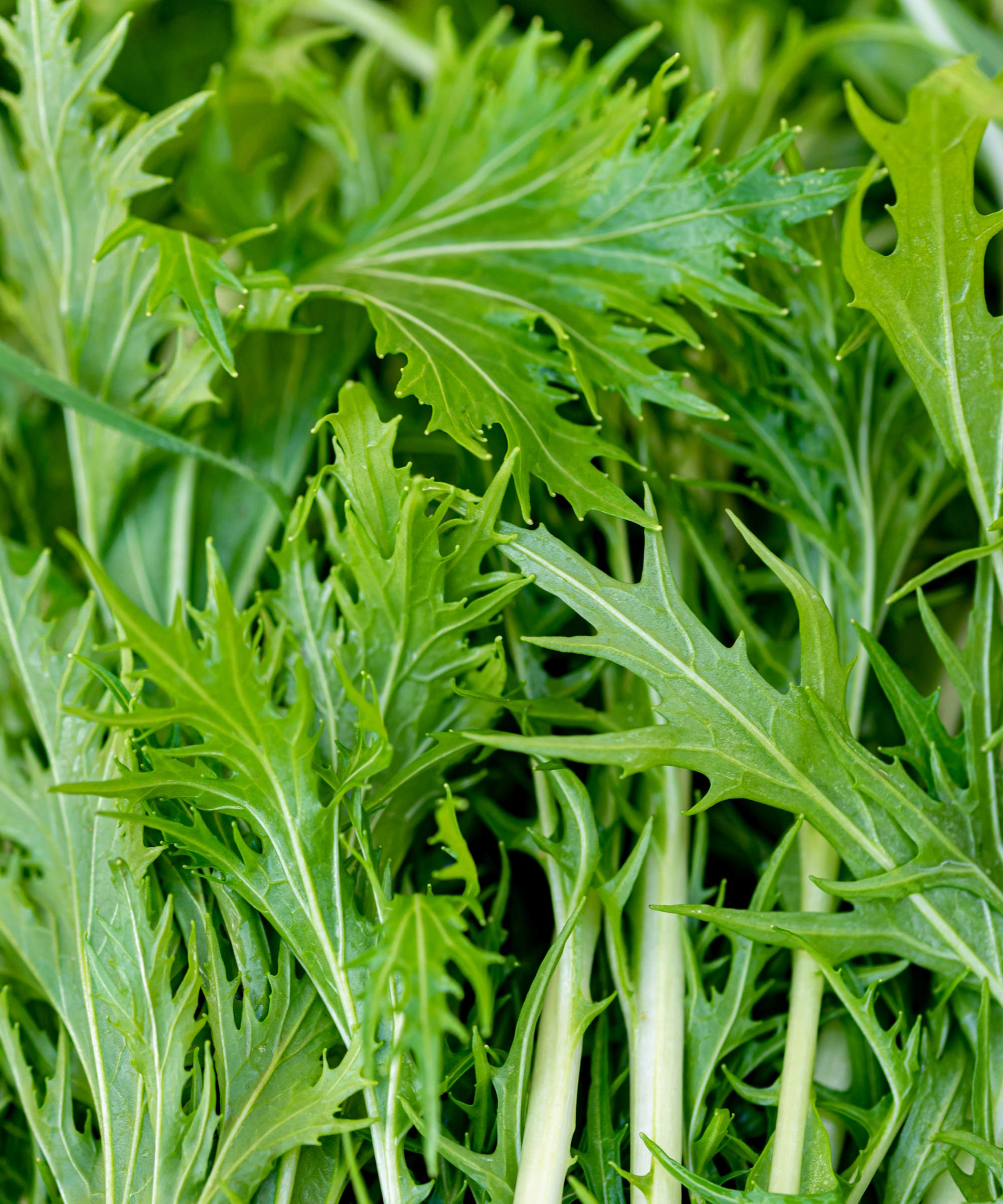
Why grow mizuna?
One of the main benefits of growing mizuna is the long cropping life, it can be grown for most of the year out in the kitchen garden and also as a winter green undercover. For example, mizuna is an ideal vegetable to grow in a greenhouse in fall to provide leaves throughout the colder months.
When it comes to flavor, Katie Burdett, owner at Growing With Gertie, hails mizuna as a ‘delicious mustard green’, adding: ‘Mizuna has a mild peppery-mustard flavor that can be used both fresh in salad mixes as well as in cooked or pickled dishes.’
Where to plant mizuna
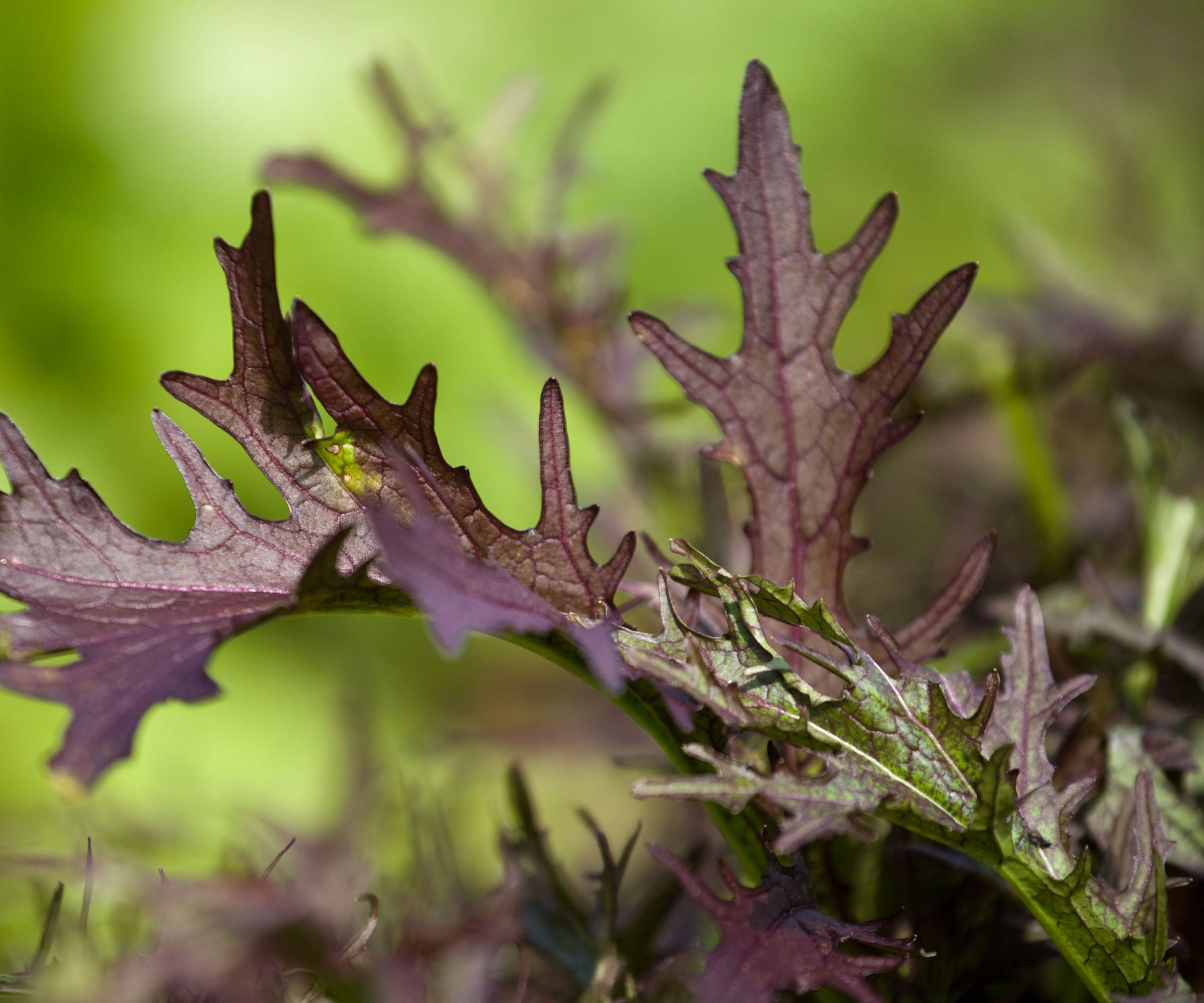
Mizuna is a very versatile plant but it does prefer cool conditions and can be a good vegetable for shade. It does like some sun in the spring and fall - so a spot that is semi-shady would be ideal for mizuna to prosper.
The crop likes a soil type that holds moisture, but is also well draining. Adding lots of organic matter to the site prior to planting boosts soil health and helps it hold more water.
As mizuna is in the brassica family, it is recommended to not plant it in the same space that you have grown other brassicas in the last three years, as part of a crop rotation plan.
How to grow mizuna from seed
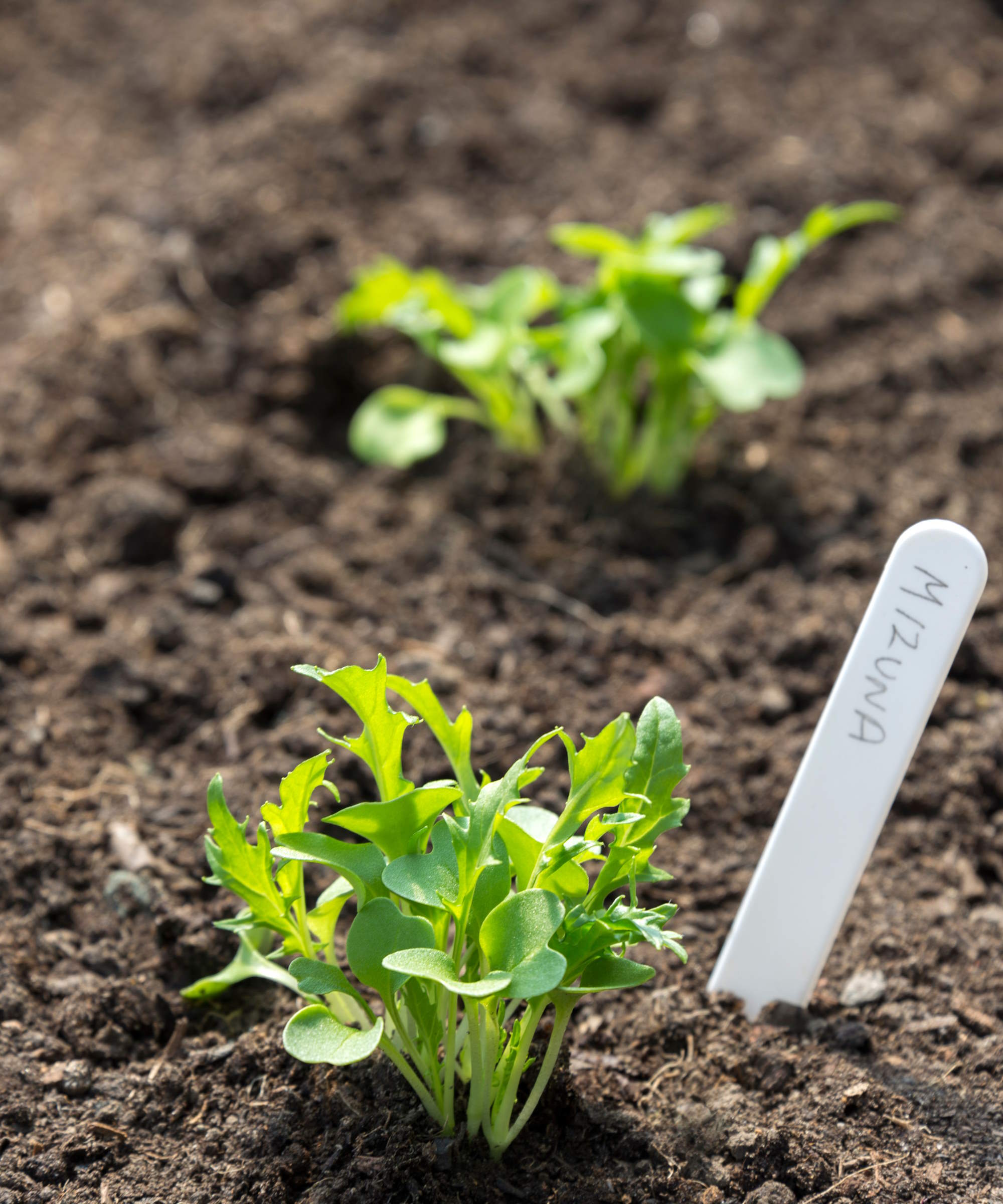
Mizuna is a crop that can be either started off indoors in a greenhouse, or on a warm windowsill, or sown directly into the garden. It is a crop that grows best in cool weather and is best sown in late winter or early spring, to harvest in late spring and early summer, and late summer or early fall for cooler weather harvests. Mizuna is a crop that will bolt and go to flower in the hot summer weather, so it is best to plan an early and late harvest either side of this.
To sow mizuna directly into the garden, start sowing from early spring onwards. Always clear the spot of weeds and other detritus prior to sowing and rake the seedbed level to create a good tilth.
Sow the seeds thinly around a quarter-of-an-inch deep into rows spaced at least six inches apart. Keep them well-watered and thin the seedlings as they develop. The final spacings want to be around 9 inches apart from medium-sized plants, or closer to 12 inches for large plants.
It is good practice to successionally sow mizuna every three weeks. This way you are guaranteed a long harvest of leaves - it is also a good way to cultivate other fast-growing vegetables, such as growing lettuce and growing radish, to have a succession of harvests.
Mizuna seeds can be started indoors in late winter to get a head start with the crop. This can be especially beneficial if you live in a colder US hardiness zone and it takes a while into spring for your soil to warm up. An alternative option is to sow mizuna seeds in a cold frame or under cloches to start them in a slightly warmer and protected environment.
Start seeds in a backyard greenhouse, or on a warm windowsill, around a month before the last frost date for your area. Sow the seeds thinly into seed trays or modules and keep them somewhere warm to germinate, ideally at 60-68 F where the seedlings should appear within a week. Keep the seedlings moist and transplant the seedlings into the garden when the frosts have passed and the plants are large enough to handle.
You can get mizuna seeds from Burpee
Caring for mizuna

Keep the soil moist throughout the growing season. Mizuna has shallow roots and it means they can dry out quickly in hot weather - and drying out can also cause it to bolt. Keep a close eye on when to water plants, or consider using a soil moisture meter, available at Amazon, to monitor the levels in the soil.
There are some ways to help keep soil moist in the summer to make life easier for you, including adding a layer of mulching materials around the plants and adding organic material, such as homemade compost, to increase the water-holding capacity of the soil.
Make sure to remove weeds from around your crops, that will compete for essential water and nutrients. Pulling unwanted plants by hand, or by running a garden hoe around regularly, will help you to keep on top of weeds.
It might be worth putting some slug control methods in place to stop snails and slugs from munching on your mizuna seedlings, some good options include beer traps, diatomaceous earth, or companion planting to attract natural predators to get rid of the pests for you.
As well as slugs, the likes of whiteflies and aphids can also cause issues for mizuna. Katie Burdett also adds: ‘Mizuna is susceptible to flea beetles, so use a lightweight row cover or insect netting to deter these pests.’
One good example of a row cover you could use to protect plants is this Ultra Fine Garden Netting, available at Amazon.
How to harvest mizuna

Mizuna is a fast-growing crop and you can start to get a crop from them within 30-40 days from sowing. Baby leaves can be picked once they are a few inches long, or the plant can be left to grow to full size.
Smaller leaves are ideal for adding raw to salads, while larger leaves can be used in cooking. The exact time to maturity will depend on when you sowed and planted the crop, along with the weather conditions.
Crystal Jarvis, Owner and Garden Consultant at Lettuce Grow Something, explains how there are three different methods for harvesting mizuna leaves:
- You can cut the older, outer leaves of the plant and leave the younger leaves in the center to continue growing. This method means you can return to harvest from the same plant in seven to ten days, but it’s the most time intensive.
- You can harvest all of the leaves from the plant by grasping a handful of leaves and cutting horizontally. Make sure to leave about one to two inches of stem near the base of the plant. Like the first method, this is a cut-and-come-again way to harvest, but you’ll have to give the plant a couple of weeks to regrow its leaves. You’ll get about three more harvests from the same plant this way.
- You can harvest the entire plant of mizuna at once. You can either plant more seeds afterward, or if you’re nearing the end of your cool season, prepare to grow something else.
Always use clean and sharp garden tools, such as pruning shears or a harvesting knife, to crop mizuna. A good example of a tool to use is this Fiskars Folding Harvesting Knife, available at Amazon. This will help ensure you make clean cuts and do not risk spreading bacteria or pathogens around the garden.
The mizuna plants will start to produce flower stems when the heat increases during the summer. This affects the flavor of the plant, though leaves can still be harvested if they are picked quickly once the stem starts to show.
Growing mizuna in pots
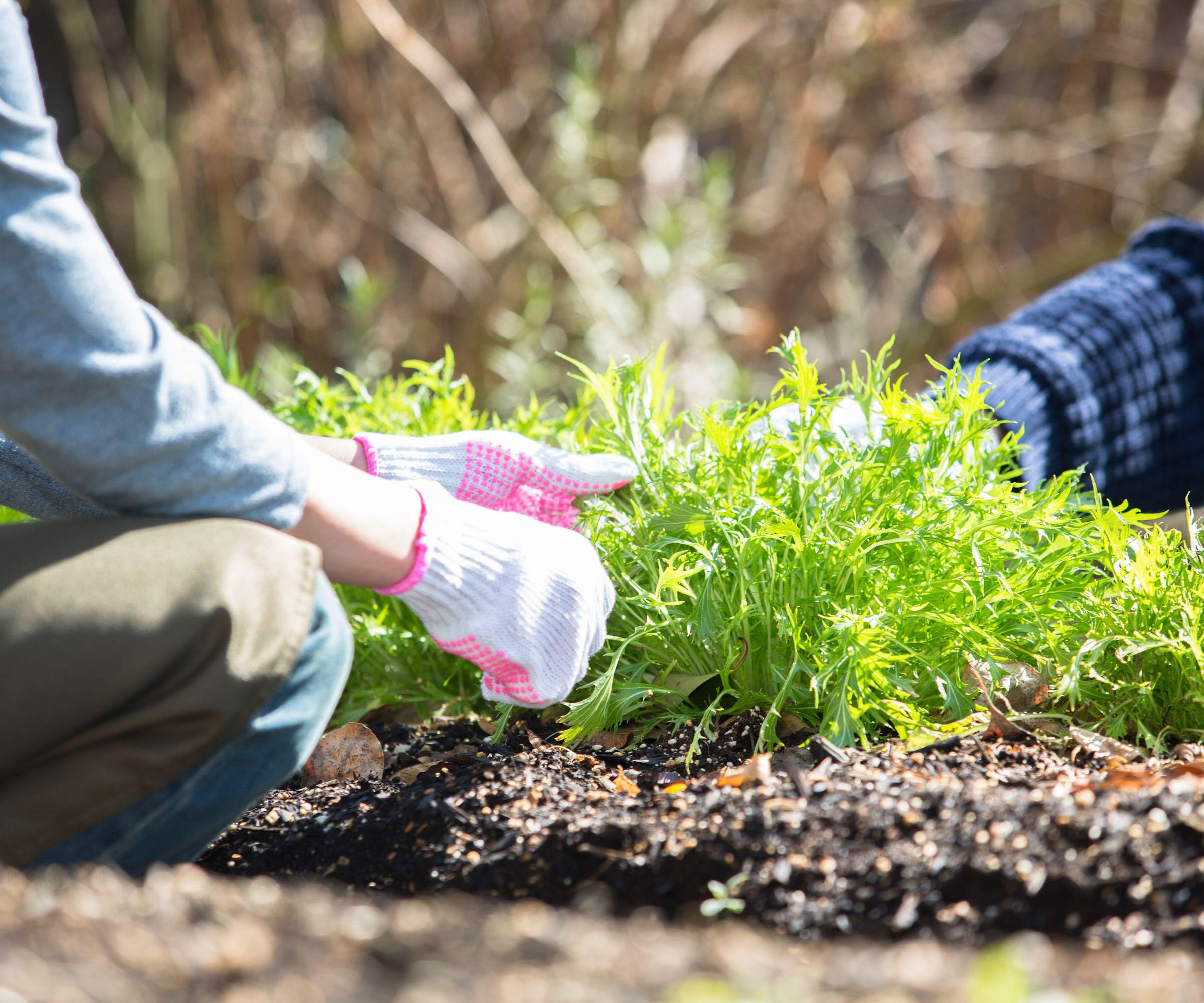
Mizuna is an ideal crop for growing in raised beds, or pots as part of a vegetable container garden. Choose a container that is around 12 inches wide and has holes in the bottom for drainage, and fill it with a free draining compost.
Sow the seeds thinly into the container and keep them moist. Place the pot in a sunny spot, though a benefit of growing mizuna in containers is you can move the container to a shadier location when the temperatures increase to hold off the potential bolting.
FAQs
Does mizuna regrow?
Mizuna can be harvested in ways that ensure it regrows and provides multiple harvests from plants. Just like with harvesting kale, harvesting chard, or cropping cut-and-come-again lettuces, you can pick the older outer leaves and that allows the younger inner leaves to keep growing. The alternative is to cut across the entire plant an inch from the base and it will resprout again.
What grows well with mizuna?
Mizuna is regarded as a good companion plant for a wide-ranging variety of other vegetables. This includes the likes of onions, corn, garlic, and peas. However, where there are good there also must be bad companions.
Those crops that are not suited to growing with mizuna include strawberries and beans. Always do your research when planning a vegetable garden to discover what plants do, and do not, like being planted side-by-side.
Mizuna is also popular to grow as a microgreen, where the young seedling of the plant can be harvested within 10 days of sowing. Even though the harvested leaf will be only two inches tall, it will still have the peppery taste of fully-grown plants and be packed with nutrients. You can get Mizuna Red Streaks Microgreens Seeds at True Leaf Market.







